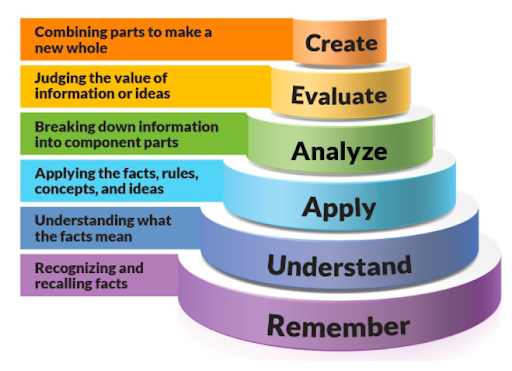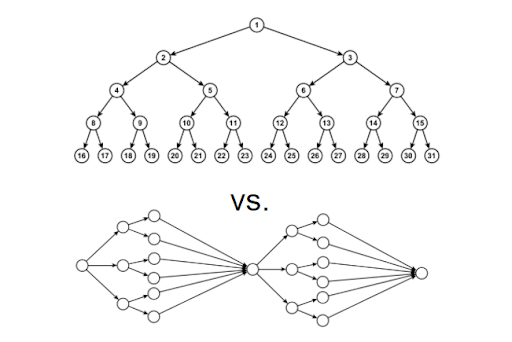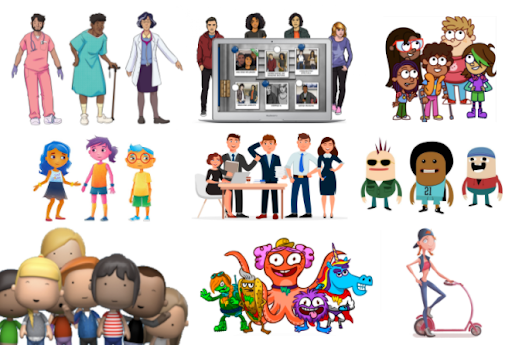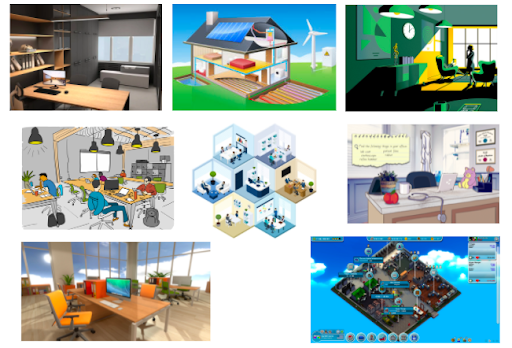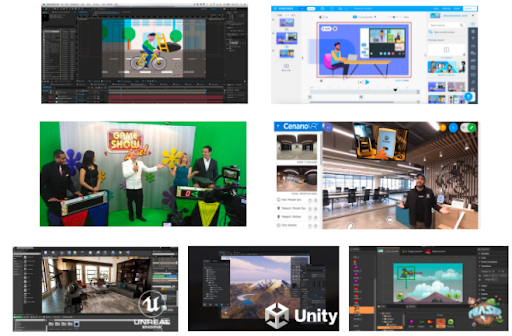If you think you need a custom learning solution or a custom training game, what should you be thinking about? There are so many things to consider, it might seem a little overwhelming. We’re here to help!
While there’s no one-size-fits-all solution, we’ve put together a checklist to help you get started. We’ll dive deeper into each of these below:
- Learning objectives
- Learner motivation
- The story arc and script writing
- Character design
- Environment design
- Audio design
- Animation and video coding
- Learning destination
Learning Objectives
What do you want your learners to achieve through your training? By choosing a destination, we can help you pave the road to get there.
What are you trying to get your learners to do? Create? Analyze? Understand? Remember? The first step in developing any custom game is to know where you want to go and what you want to achieve. The destination determines our journey in this case. Say you want customer service employees to better understand how to de-escalate a tense situation, perhaps a branching path Scenario game is best to lead them down different paths based on their decisions. If you’re looking for a quick knowledge check, a Trivia game may be the simplest and most effective way to go. You can find game templates in our DIY game-authoring tool, The Training Arcade®, and those can be built in minutes with your own content. However, if you want a more custom gamified experience, we can create that for you once we understand your learning objectives, timeline, and budget.
Learner Motivation
Now that we know what we want our learners to do, the next question is how do we get them to be motivated to accomplish that goal.
Games are inherently engaging but that’s not quite enough to get someone to really invest in the training. Different types of game players want different things. Some are explorers who just want to roam around and see where their digital feet take them. Others are social gamers who like to play in groups and team competitions. Others still just like to win! They want to understand how to play the game and be the best they can be.
Making sure you understand the motivations of ALL your learners is important to maximizing the efficacy of your game and to make sure your learners get the most out of the experience.
Story Arc and Script Writing
Creating a story arc for your learners is imperative and we’re here to help you craft this journey.
What’s a compelling and memorable story that your learners can relate to? If someone can relate to a story or situation in your game, they are far more likely to remember it in the future and therefore remember the training that went along with the game. Creating a story like this, particularly in a branching path scenario, can be a balancing act.
When creating your story, there are many things to consider:
- How much information do you want to push to your learners?
- How much do you want them to engage with the information?
- At what point do you want them to make decisions in the game?
- How frequently do they have to make those decisions?
- How much do you want to lead them down a particular path?
The last point is where the balancing act comes in. You want your learners to have the freedom to explore, try, fail, and ultimately succeed. However, if they’re given too much freedom to explore, they may go off the rails and it may be too hard for them to get back to the intended path and ultimately to learn.
Making sure these “guardrails” are in your story is not something you have to do alone. Our custom team loves creating new worlds and journeys and can help you get started on yours.
Character Design
Animated or otherwise, make sure the characters in your story relate to the “characters” your learners interact with daily.
Much like the story and your learners themselves, the character in the story should be relatable to your audience and the situations they may find themselves in. Your characters should relate to “characters” your learners interact with daily. Consider what you want the characters to look like?
You want to think about what’s most realistic and appropriate for your audience and the content. You also want to ensure the characters are memorable.
The illustrators at The Game Agency are truly extraordinary. Check out some samples of their work to see the kinds of characters and worlds we can build for you.
Environment Design
To hammer this point home, the environment of your game, like the story and characters, should be relatable to and appropriate for your audience.
What speaks to the culture of your learners?
Say you built a game set in the North Pole but none of your learners have ever been there or even seen snow! Let’s pretend you’re lucky enough to have your office on a tropical island. Your learners are not going to have personal memories of the cold and snow and therefore not likely to have a good grasp of the environment present in the game. And that does not lend itself to engagement or retention.
When creating environments, we will often use a mood board, like the one below, to explore different design styles and see which one, well, fits our mood!
Using a mood board can help you, well, figure out the environment or mood of your game.
Audio Design
Audio design is a topic that people often don’t think about. Do you want to use voiceovers, music, sound effects? Audio considerations are often the “bells and whistles” that make a great game shine.
Well-placed music can build excitement, fear, joy, or anything else. Great audio can immerse the learner into your gaming environment to make it more engaging. The same can be said for well-placed sound effects.
Animation, Video, and Coding
There are tons of great tools to help you bring your project to life. We can help you decide which one is right for you.
We know our learners, our story, our environment, we’ve even designed some custom sound effects, now, how are we going to bring this all to life?
There are numerous tools and suites to help you bring your game to life. Tools like Adobe Premiere, Powtoon, Vyond, CenarioVR, can literally bring you content to life in a video, animated or otherwise, however, we also have Emmy award-winning video creators who can really help you level up your game.
Software such as Unreal Engine and Unity are examples of programs we use to help create custom game experiences. The relationship between a game designer, developer, and instructional designer is key to ensuring the game is not only great-looking and fun but that it also accomplishes your learning objectives.
Learning Destination
You’ll need to consider how you are going to deploy the custom game or share your gamified learning experience with your team.
Besides traditional eLearning or mLearning platforms, you also have the option with games to go single or multiplayer. Or, with certain game types, you can have an instructor lead your learners through the game for an even more interactive experience.
Measuring Success
Having a custom game or gamified learning experience is just the start, we need to be able to measure its success. Games make this a breeze, especially when you start using xAPI data.
Gameplay data provides all kinds of actionable data to help you further improve your game, your learner’s experience, and your training efficacy overall. A shortlist of the analytics you can capture from a game include:
- Measure knowledge retention, skills development, and application
- Track decision processing, individual choices, tendencies, risk tolerance, etc.
- Track accuracy, effectiveness, and efficiency of performance
- Observe performance and coach accordingly
Is a Custom Game Solution Right for You?
There is no one-size-fits-all solution to, well, custom game solutions. Everything is unique to your needs and a custom game solution should be unique to you and your company. Check out our case studies here. Go here to learn more about how you can add games to level up your eLearning courses.
If building something from the ground up is out of your budget or you need something faster, fear not! Our game-authoring tool, The Training Arcade can help you plug your content into pre-built game templates and start using them with no coding required.
If you’d like to learn more about how a custom-built game can enhance your training strategy, follow this link to get in touch with one of our gaming experts.
